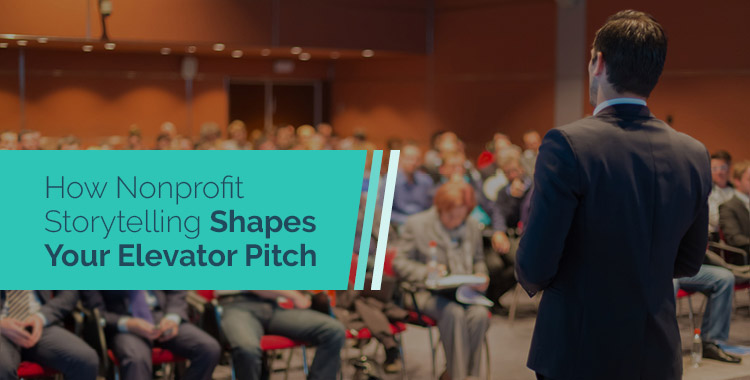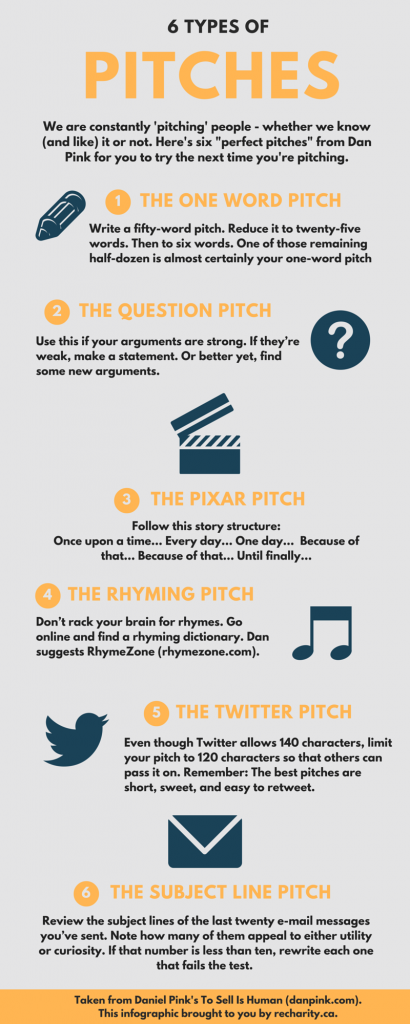
Storytelling permeates nearly every aspect of our society. The human brain is hardwired to respond to the power of storytelling. From curling up with a good book, to taking a trip to the movies, to listening to your friend recount what they did last weekend, human beings love to be enthralled by stories.
Throughout history, people have moved nations, changed minds, and touched hearts with only the power of words on their side. They do this by creating a narrative so powerful and emotionally charged that people cannot ignore what they are saying.
We respond better and remember more when information is presented as a narrative. But there is a limit to how long people are willing to pay attention to stories they are not already invested in. Brevity is the key to this kind of communication.
Incorporate storytelling into your nonprofit’s elevator pitches and see more people become invested in your organization and the cause it supports. When approaching storytelling in your elevator pitches, make sure you understand the following:
- Why is nonprofit storytelling important?
- How to tell your nonprofit’s story
- How to make your nonprofit elevator pitch
- Nonprofit elevator pitch samples
Let’s dive in and prepare you to share your nonprofit’s fundraising and engage more donors!

1. Why is nonprofit storytelling important?
Storytelling may seem like an ambiguous and immeasurable concept that’s difficult to apply to marketing in concrete ways. But, this could not be more wrong—storytelling is a science! As humans, we seek emotional connection and intellectual stimulation. Nonprofit storytelling combines these two elements to maximize the impact of your nonprofit’s marketing strategy.
When we hear a story, it is a natural impulse to become engrossed in the narrative. In other words: Our brains actively participate during storytelling.

We experience, in a small way, what the speaker is saying. We imagine ourselves in the story. We empathize with the characters in the story. This all makes the stories, or any content that has a story-like structure, more memorable. As a member of a nonprofit marketing team, you surely understand that being memorable is a huge part of your job.
Information isn’t everything when it comes to marketing your nonprofit. The way you present your nonprofit materials to donors and potential donors greatly influences how they will respond. Donors want to see the human element of your nonprofit. They want to see the impact that your organization has and imagine their own potential influence.
Your organization does amazing work that helps contribute to the social good. So, why hide what you do behind spreadsheets and data reports? Make sure your nonprofit’s story is clearly highlighted in a way that guarantees the highest chance at success.

2. How to tell your nonprofit’s story
While there are many ways to go about storytelling, there are a few story frameworks and stories that have proven their success time after time, among them The Hero’s Journey, the Narrative Framework, and, of course, the Pixar Pitch. These story frameworks contain all the greatest elements of stories that have shaped literature, film, and now, marketing techniques.
These frameworks can all be adapted to suit your nonprofit’s needs. If you rely on The Hero’s Journey framework you can depict the donor as the hero who enables your good work and you are merely their mentor figure who gets the process rolling.
For a clear and easy way to get started developing your nonprofit’s story, consider telling one of the following story types:
- The genesis story. Explain how your organization started and explore the driving, motivating forces that are behind your organization’s goals. Don’t be afraid to delve into the importance of your cause and why change is needed.
- The future story. Rooted in the human desire to leave the world a better place, this story will convey what could be if your organization succeeds and achieves its goals. This will impress upon your audience the vital importance of your organization in bettering the world.
- The beneficiary story. Indicate who you are helping and how their life has changed because of the efforts of your organization. This will put a name, or even a face, on the beneficiaries of your efforts and will increase the likelihood of your audience forming an emotional bond with your cause.
- The staff story. Shine a spotlight on your nonprofit staff who make everything happen. Reveal what goes on behind the curtain at your organization and demonstrate that people are extremely passionate about your cause and are willing to work hard to accomplish your organization’s goals.
- The supporter story. Focus on the impact that an individual supporter can have. Allow the potential donor to see how they can make a difference and further your important cause.
These story formats will help you uncover what is truly important to your organization and the real reason why you do what you do. Your genesis story, for example, gets back to the root issue or problem your organization exists to solve.
Think of your mission statement. This should be one of the first places you implement storytelling techniques, albeit in a very concise, laser-focused way. After all, years of board meetings, fundraising campaigns, and marketing struggles can make it surprisingly easy to lose focus on your original driving goals. This is called ‘mission drift’, and you can help prevent it by writing a strong mission statement centered around the future you envision or the beneficiaries you seek to help.
Telling stories can help you refocus your organization’s mission and make it memorable for your audience. Plus, it’ll serve as an even stronger guiding light or roadmap for your team. Using one of the storytelling frameworks listed above can reduce your team’s stress and make it easier to tell the stories that your audience wants and responds to.

3. How to make your nonprofit elevator pitch
All members of your nonprofit team need to be prepared to share what your organization stands for, what you do, and why you are important. If a community member asks about your nonprofit, every person involved in your organization needs to be able to answer accurately and succinctly.
Perfect your elevator pitch so people can easily understand both your organization’s role in your community and the wider world.
An elevator pitch is a quick, engaging summary of the work you do. It should be simple, easily understood, and memorable. Increasingly elevator pitches aren’t done in person, rather they are exchanged via email, websites, chats, videos, etc. No matter how you are giving your pitch, make sure it is succinct and informative, while also emphasizing the emotional component of your work.
There are many ways to form an elevator pitch, but here are 6 of the best:

While all of these are useful in their own right, the Pixar pitch is especially valuable because of its reliance on nonprofit storytelling. This framework clearly outlines what your organization should talk about and how you should approach the topic, ensuring you don’t encounter any obstacles in your fundraising strategy.
Having your elevator pitch rely on a storytelling model ensures you have grabbed the attention of your audience from the start. Time is valuable when giving an elevator pitch and you need to make every second count. When you have real people and real evidence to present, listeners or readers will be more engaged and more likely to remember your organization long after the conversation is over.

4. Nonprofit elevator pitch samples
Developing with a new storytelling-based marketing strategy for your nonprofit may seem daunting, but it is really simple. Check out these elevator speech examples for nonprofits that use the Pixar pitch format to help you get started.
The Pixar pitch story format is surprisingly simple and flexible. You can even use the Pixar pitch format to incorporate the classic Hero’s Journey trope into a beneficiary story:
- Once upon a time, there was a woman named Florence in Rwanda who was fighting to provide for her children.
- Every day, she would wake up at the crack of dawn and work all day but never quite get ahead.
- One day, she saw a group of women with an Opportunity International loan officer under a tree and walked over to see what was going on.
- Because of that, she learned how a micro-loan could help her start her own milk distribution business in her neighborhood.
- Because of that, she was able to employ other people, open two stores and earn more income with less work.
- Until finally, she had earned enough profit where she could provide a quality education for her son Johnson.
One of the most popular trends in nonprofit storytelling is to depict the donor as the hero, seen below:
- Once upon a time, there were thousands of people living in the village of Yella, Ethiopia without access to clean water, which sadly contributed to preventable death and disease in the community.
- Every day, women and children would walk for hours just to fetch usable, drinkable water, taking up valuable time away from work, for women, and school, for children.
- One day, Jenny decided to participate in the Abbotsford Run for Water and raise funds for the Run for Water Foundation.
- Because of that, Jenny raised $350 by inviting friends and family to donate to her page.
- Because of that, the Run for Water foundation was able to provide clean water to 10 villagers in Yella, Ethiopia from Jenny alone.
- Finally, thanks to Jenny and other dedicated supporters, the entire village of Yella has access to clean, drinkable, usable water letting women and children spend more time generating income and going to school.
Your stories should, in some way, be donor-centric, relating back to the donor’s potential impact should they get involved in your organization. Storytelling, while most obviously present in the Pixar pitch, can also be found in the other types of pitch. You can easily distill the information in these pitches to satisfy the requirements of any of the other pitches. For example, we have turned the second Pixar Pitch into each of the following:
- The one-word pitch. The six-word phrase “provide clean water to developing countries” can easily be concentrated into a single word: water.
- The question pitch. How long do you think you can go without access to clean water?
- The rhyming pitch. When it’s water you must supply, don’t stand idly by.
- The twitter pitch. Provide clean water to those who need it most with the Run for Water Foundation.
- The subject line pitch. Want to help quench the clean water crisis?
No matter which type of pitch you choose to utilize, there is always a way to emphasize the storytelling element of marketing. You can tug on heartstrings, inspire with facts, or open someone’s eyes to the truth of the situation, all with your elevator pitch.
Storytelling is an integral part of nonprofit marketing, especially when it comes to elevator pitches. In order to capture the interest of your audience and embed your organization in their memory, you must concentrate on telling your nonprofit’s story in a way that is impactful and memorable.
Additional resources for nonprofit storytelling include:
- What Makes a Strong Impact Story? See what can maximize your nonprofit story’s impact with this guide!
- Building a Strong Nonprofit Brand. A step-by-step guide and free resources for cultivating your nonprofit’s brand.
- Stewardship Stories: 4 Things You Have to Do. Find out how you can use storytelling to steward donors with this article.
- A Great Nonprofit Brand is About People. Learn more about the importance of maintaining the human element of your nonprofit with this post!